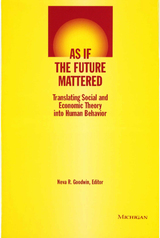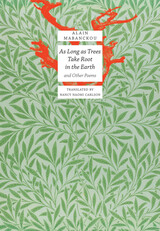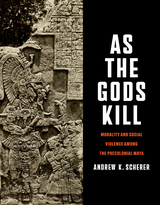3 books about Garden Culture

Fruitful Sites
Garden Culture in Ming Dynasty China
Craig Clunas
Duke University Press, 1996
Gardens are sites that can be at one and the same time admired works of art and valuable pieces of real estate. As the first account in English to be wholly based on contemporary Chinese sources, this innovative, beautifully illustrated book grounds the practices of garden-making in Ming dynasty China (1368–1644) firmly in the social and cultural history of the day.
Who owned Ming gardens? Who visited them? How were they represented in words, in paintings, and in visual culture generally, and what meanings did these representations hold at different levels of Chinese society? How did the discourse of gardens intersect with other discourses such as those of aesthetics, agronomy, geomancy, and botany? By examining the gardens of the city of Suzhou from a number of different angles, Craig Clunas provides a rich picture of a complex cultural phenomenon—one that was of crucial importance to the self-fashioning of the Ming elite.
Drawing on a wide range of recent work in cultural theory, the author provides for the first time a historical and materialist account of Chinese garden culture, and replaces broad generalizations and orientalist fantasy with a convincing picture of the garden’s role in social life. Fruitful Sites will appeal to all students of China’s cultural history, to students of garden history from any part of the world, to art historians, and to readers engaged in Asian and cultural studies.
Who owned Ming gardens? Who visited them? How were they represented in words, in paintings, and in visual culture generally, and what meanings did these representations hold at different levels of Chinese society? How did the discourse of gardens intersect with other discourses such as those of aesthetics, agronomy, geomancy, and botany? By examining the gardens of the city of Suzhou from a number of different angles, Craig Clunas provides a rich picture of a complex cultural phenomenon—one that was of crucial importance to the self-fashioning of the Ming elite.
Drawing on a wide range of recent work in cultural theory, the author provides for the first time a historical and materialist account of Chinese garden culture, and replaces broad generalizations and orientalist fantasy with a convincing picture of the garden’s role in social life. Fruitful Sites will appeal to all students of China’s cultural history, to students of garden history from any part of the world, to art historians, and to readers engaged in Asian and cultural studies.
[more]
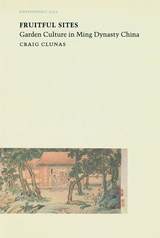
Fruitful Sites
Garden Culture in Ming Dynasty China
Craig Clunas
Reaktion Books, 1996
Gardens are sites that can be at one and the same time admired works of art and valuable pieces of real estate. As the first account in English to be wholly based on contemporary Chinese sources, this beautifully illustrated book grounds the practices of garden-making in Ming Dynasty China (1369–1644) firmly in the social and cultural history of the day.
Who owned gardens? Who visited them? How were they represented in words, in paintings and in visual culture generally, and what meanings did these representations hold at different levels of Chinese society? Drawing on a wide range of recent work in cultural theory, Craig Clunas provides for the first time a historical and materialist account of Chinese garden culture, and replaces broad generalizations and orientalist fantasy with a convincing picture of the garden's role in social life.
Who owned gardens? Who visited them? How were they represented in words, in paintings and in visual culture generally, and what meanings did these representations hold at different levels of Chinese society? Drawing on a wide range of recent work in cultural theory, Craig Clunas provides for the first time a historical and materialist account of Chinese garden culture, and replaces broad generalizations and orientalist fantasy with a convincing picture of the garden's role in social life.
[more]
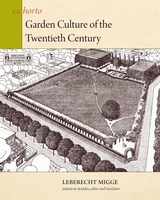
Garden Culture of the Twentieth Century
Leberecht Migge
Harvard University Press, 2013
Leberecht Migge (1881-1935) was one of the most innovative landscape architects of the early twentieth century. With work ranging from large urban parks to housing settlements with allotment gardens, he sought to create functional green spaces that would not only meet the environmental challenges of the industrial metropolis but also improve the social conditions of modern life. Migge's notion of "garden culture" captured the essence of the progressive reform movements of early twentieth-century Germany and yet was unique in proposing a comprehensive role for open space planning within this vision. The nationalistic rhetoric of Garden Culture of the Twentieth Century marks it as a political tract of the late Kaiserreich, and its deep influence within the Siedlung communities of the Weimar era attests to its lasting cultural impact. Perhaps the book's greatest significance today lies in Migge's emphasis on the socioeconomic benefits of urban agriculture, which prefigured both this important contemporary trend as well as other recent developments in green technology and infrastructure. Modern readers will find echoes of a progressivism that many have taken to be of only recent origin and will gain a better understanding of the social and economic history of pre-World War I Germany.
[more]
READERS
Browse our collection.
PUBLISHERS
See BiblioVault's publisher services.
STUDENT SERVICES
Files for college accessibility offices.
UChicago Accessibility Resources
home | accessibility | search | about | contact us
BiblioVault ® 2001 - 2025
The University of Chicago Press


